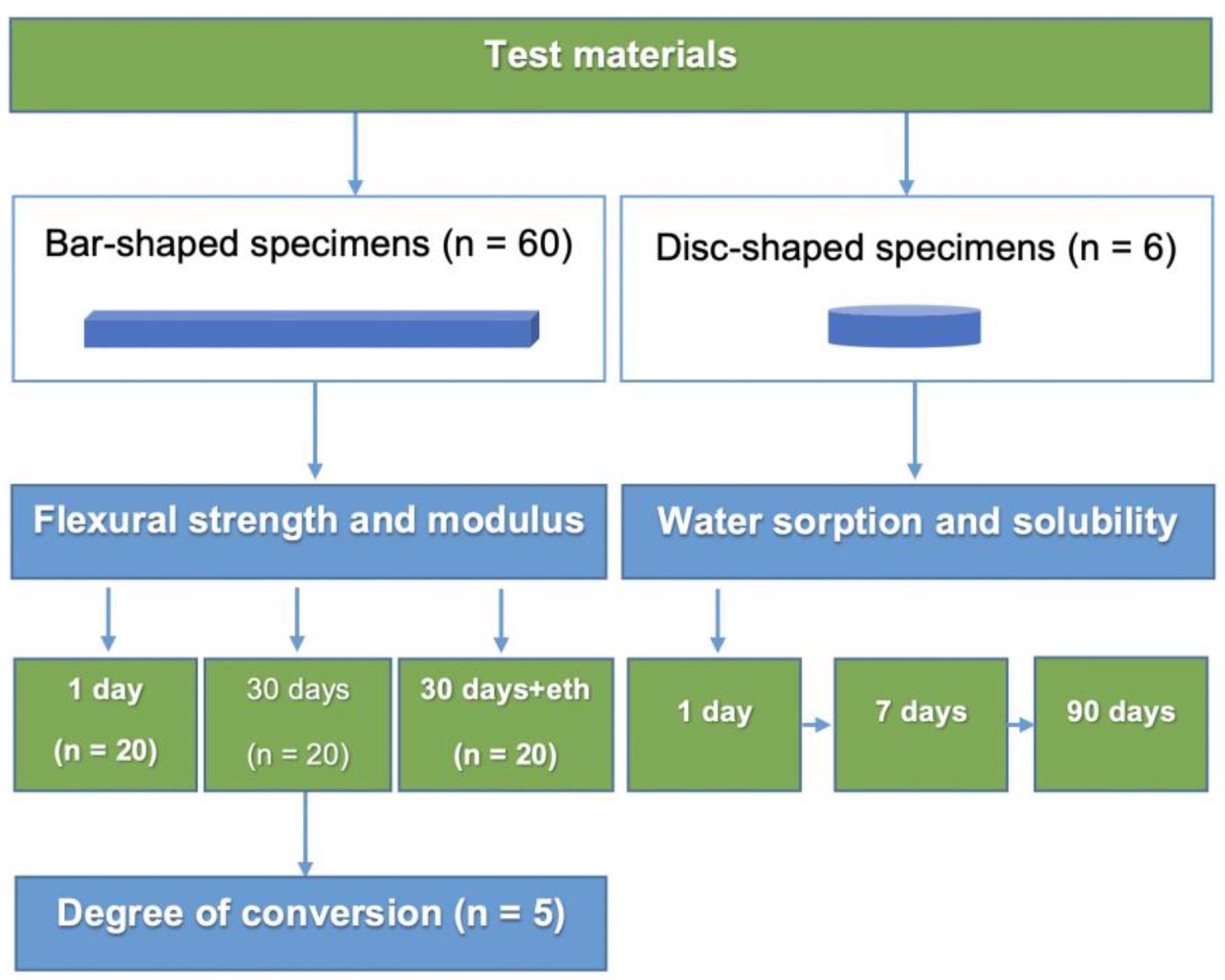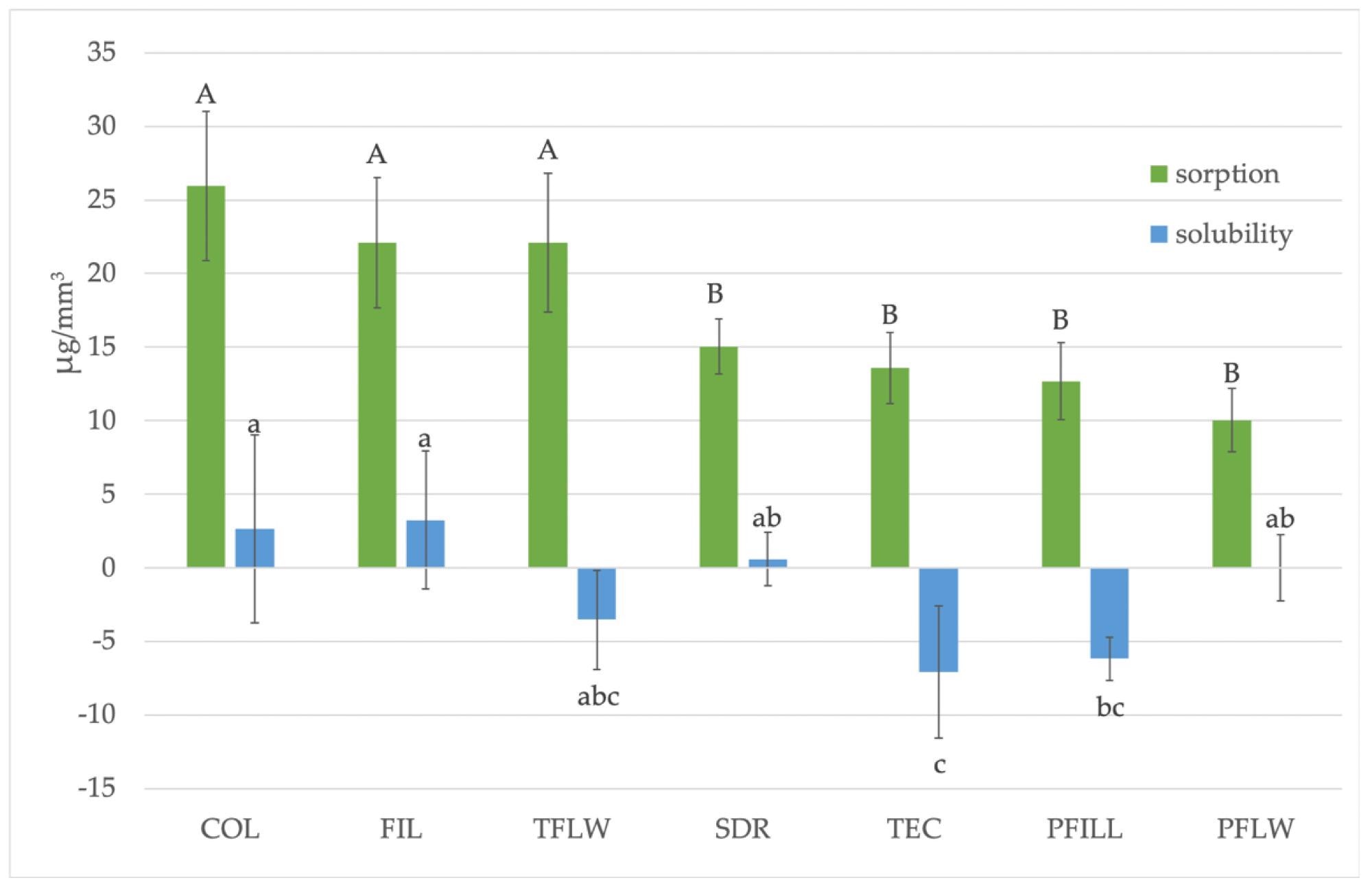.jpg) By Susha Cheriyedath, M.Sc.Reviewed by Skyla BailyJan 27 2022
By Susha Cheriyedath, M.Sc.Reviewed by Skyla BailyJan 27 2022In an article recently published in the journal Materials, researchers experimentally showed that the high-viscosity new generation bulk-fill resins are more resistant to mechanical damage after artificial aging and treatment with water and ethanol, compared to low-viscosity bulk-fill resins.

Study: Aging-Dependent Changes in Mechanical Properties of the New Generation of Bulk-Fill Composites. Image Credit: megaflopp/Shutterstock.com
Background
Bulk-fill resins are widely used in dental medicine. Proper placement of composite fillings is highly advantageous and saves time. They can be used in the thickness range of 4-5 mm for much simpler clinical procedures without any adverse effects.

Flow chart of the experiments. Image Credit: Danijela M et al., Materials
Many studies have investigated the chemical, mechanical, physical, and biological properties of bulk-fill resins to determine the best bulk-fills that disintegrate less with prolonged usage in dental treatments. Many works focused on the polymerization pathways that help make dental procedures hassle-free.
Bulk-fill composite resins contain special photo-initiators such as Bis- (4-methoxybenzoyl) diethyl germanium, commercially termed as Ivocerin. It is a Norrish I type photo-initiator based on germanium and is part of composites such as Tetric PowerFill (PFILL) and Tetric Power Flow (PFLW). Ivocerin decreases the polymerization time which reduces the aging of bulk-fill composite resins, allows higher light penetration depth, and also is better than camphorquinone. Similarly, the Fill-Up! (COL) dual-cure bulk-fill material contains, in addition to camphorquinone, benzoyl peroxide which acts as a chemical polymerization initiator.
This study analyzed the properties of these materials with changes in their chemical composition compared to the previous generation of bulk-fill composites.
About the Study
In the present study, researchers evaluated the behavior of bulk-fill resin composites after prolonged exposure to water and accelerated aging in ethanol. They tested six different new-generation bulk-fill composite resins Filtek One Bulk Fill Restorative (FIL), PFILL, PFLW, SDR Plus Bulk Fill Flowable (SDR), Tetric EvoCeram Bulk Fill (TBF), and COL and compared them to two reference materials called Tetric EvoFlow (TFLW) and Tetric EvoCeram (TEC).
A fourth-generation poly wave LED curing device with a Blue phase, Power Cure, and Ivoclar Vivadent in high power mode was used to induce polymerization of the investigated materials, with average values of 950 mW/cm2. Before each sampling procedure, the radiant exitance was measured three times with a hand-held radiometer and the average was calculated. The curing unit's emission spectrum showed a blue light peak at 447 nm and a violet peak at 404 nm.
Bar- and disc-shaped materials were used to find the best fit for prolonged usage. These materials were tested for flexural strength and flexural modulus for a period of 30 days, solubility, and water sorption for a period of 90 days.
Three-point bending stress and degree of conversion parameters are also evaluated. Polished aluminum molds with a groove of size 16 × 2 ×2 mm3 were used to make the specimens, with polyethylene strips that cover the top and bottom apertures. On each side, light-curing was performed six times, three times per 20 seconds, with a radiant exitance of 950 mW/cm2. A custom-made silicone mold was used to ensure that the light guide was in the same position. The specimens were kept in the dark in 4 mL saline solution at 37 °C in plastic containers with a conical bottom (10 samples each).

Flexural modulus (GPa) values for materials tested according to ISO 4049. Equal letters represent statistically homogeneous groups for a particular time point. Parentheses indicate statistically similar groups for each material (p < 0.05). Image Credit: Danijela M et al., Materials
To account for the factors "material" and "depth," a two-way ANOVA was used to examine the degree of conversion. The analysis was followed by one-way comparisons at individual levels of each factor because both factors had a substantial influence on the degree of conversion. One-way ANOVA and Tukey's post hoc test were used to compare the degrees of conversion of materials and to evaluate water sorption and solubility values among materials. Independent observations t-tests were used to compare the degree of conversion at depths of 0 mm and 2 mm inside a specific material.
Observations
The results showed that all the five bulk-fill resins tested showed an increase in material reliability with time. The distributions of flexural strength values in these materials either moved toward higher values (TBF and COL) or lower values (PFLW and SDR). After ethanol aging, PFILL and FIL showed an increase in material reliability, while TFLW showed a decrease in material reliability.
All tested materials showed a high degree of conversion of over 80% and showed no statistically significant differences between the bottom and surface of the sample. COL showed the highest degree of conversion while SDR had the lowest values.
TEC showed transient reliability which had decreased after 30 days. Similarly, COL had the highest water sorption values exceeding 20 μg/mm3, followed by FIL and TFLW with had statistically similar results. PFLW has the lowest water absorption ratings. TFLW, COL, and FIL showing the highest water absorption over 90 days are inconsistent with FIL and COL showing the highest degree of conversion because the degree of conversion is usually associated with lower water sorption.
TFLW, TEC, and PFILL all showed negative solubility values, whereas PFLW had a near-zero solubility.

Comparison of water sorption and solubility of tested materials. Uppercase letters indicate statistically similar sorption values, while lowercase letters indicate statistically similar solubility values (p < 0.05). Image Credit: Danijela M et al., Materials
Conclusions
This study showed that new generation, high-viscosity bulk-fill resin composites can withstand mechanical damage caused by aging. Low-viscosity bulk-fill materials have been shown to be less resistant to artificial aging in water and ethanol and need a coated high-viscosity top layer.
The experimental conditions for the current study included an extended curing period, which was longer than the manufacturer’s recommended curing time, and a 2 mm depth. The trends in mechanical characteristics after in vitro accelerated aging were largely material-dependent under these conditions.
Filtek One Bulk-fill, a new generation bulk-fill composite incorporating addition–fragmentation chain transfer technology, had exceptional mechanical qualities and a high conversion rate despite significant water sorption. Tetric PowerFill, another material containing an addition–fragmentation chain transfer reagent, was significantly improved than its predecessor, Tetric EvoCeram Bulk-fill.
Disclaimer: The views expressed here are those of the author expressed in their private capacity and do not necessarily represent the views of AZoM.com Limited T/A AZoNetwork the owner and operator of this website. This disclaimer forms part of the Terms and conditions of use of this website.
Source:
Danijela Marovic, Matej Par, Matea Macan, Nikolina Klarić, Iva Plazonić, Zrinka Tarle Materials. Aging-Dependent Changes in Mechanical Properties of the New Generation of Bulk-Fill Composites doi: https://www.mdpi.com/1996-1944/15/3/902